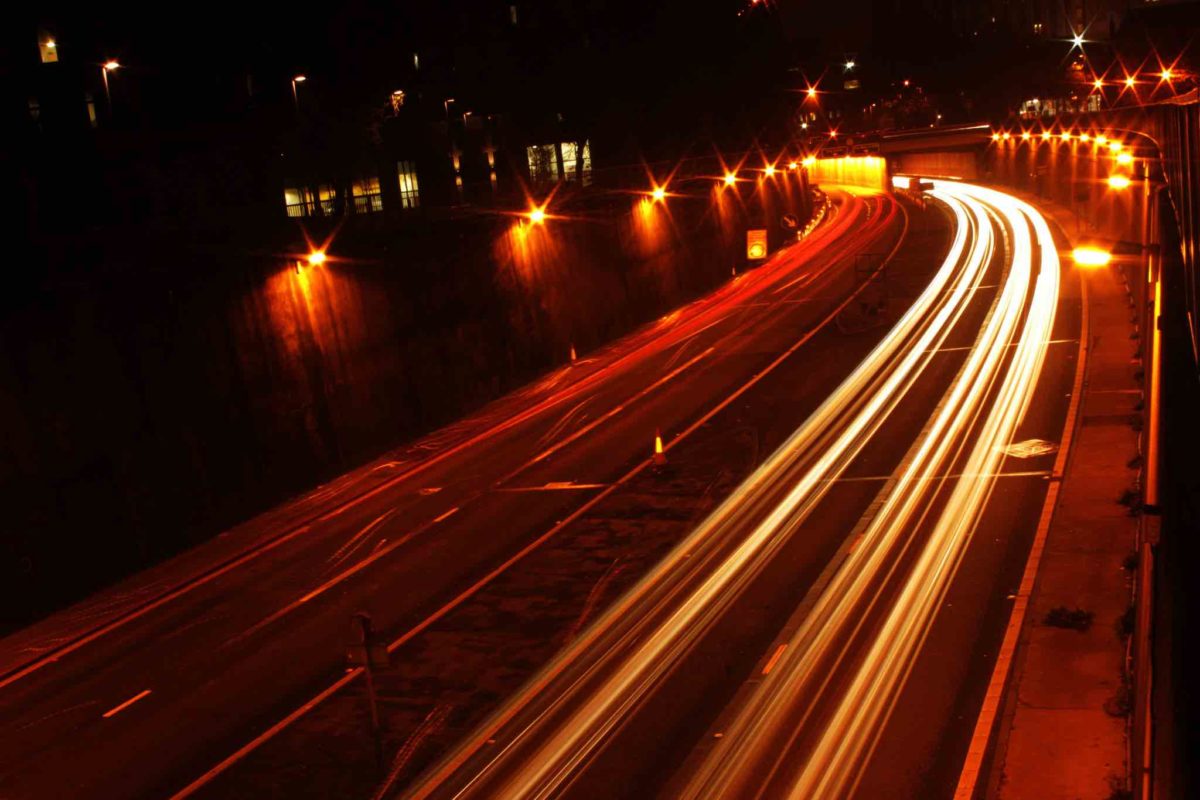With people returning to the office part or full-time, the commute is getting ready to come back in style. That means a return to morning podcasts, to-go cups of coffee and, yes, the sweet smell of fuel exhaust from sitting in traffic.
Even with last spring’s massive work from home surge, global emissions only dropped about 7% in 2020. But the amount of cars on the road has a butterfly effect on more than just climate change. Transurban, an Australian transportation infrastructure company with a D.C. presence that operates express toll lanes, wants to know exactly how much people in the area are on the road, and what that means for local infrastructure projects.
In partnership with the Eastern Transportation Coalition and with funding from the U.S. Department of Transportation, Transurban is conducting a study to measure how a pay-as-you-go model would work instead of paying the motor fuel tax at the pump. For every gallon of gas sold, the District collects 24 cents to fund bridges, roads and other infrastructure projects. The study is exploring different methods of funding such work. On a pay-as-you-go model, technology could help to track how vehicles are used, so residents could pay toward infrastructure funds based on use. The study will also be able to look at how a congestion pricing model would work, as well.
Sign upThrough the study, participants receive a device in the mail called DriveTU, which plugs into the OBD-II port in a vehicle, typically located under the dashboard, to measure how much DMV-area drivers are actually on the road. Participants in the four-month, anonymous study can also choose to activate a GPS in the device so it knows exactly where they’ve driven, or to have it just show how many miles have been driven without displaying jurisdiction.
Transurban Vice President of Corporate Strategy and Innovation Emeka Moneme said the company is offering the choice between methods to get people more familiar and comfortable with sharing data about their driving habits.
“It’s really just giving people some choice about how much information they do want to share,” Moneme said. “What we’ve found, what we believe is that the choice that’s going to get people more comfortable with, frankly, sharing more data, is to just do what you normally do. You just drive.”
If device use were to become policy, Moneme said the idea is that drivers would be able to take a credit against the motor fuel tax that they would have spent while driving back and forth. If they paid more than what was estimated, they would receive money back, or pay the difference if it was underestimated. The hope of the study, Moneme said, is to see how well the device approximates the actual use of the road and understand the full impact.
“We just want to understand how it will actually work to manage the accounts,” Moneme said, adding that the company is also interested in hearing about user experience.
The study, though, will also be able to measure the full impact of electric vehicles (EVs) on the motor tax. The DriveTU device pilot project will explore whether or not there will be enough revenue generated by vehicle charging to fund the country’s infrastructure projects—pretty crucial, considering there’s a $1.2 trillion infrastructure framework on the table in Congress.

Emeke Moneme (Courtesy photo)
“Less gas tax is being collected than ever before because our cars are more fuel efficient. That’s a good thing — not good for the highway trust fund, but good for the planet…” Moneme said. “But the bottom line is that there’s less dollars available to maintain the roads, bridges and all the infrastructure for our roadways.”
While there have been other hindrances to the motor tax in the past, Moneme said EVs are such a unique change because they’re disrupting at a much quicker pace. Transurban, he said, wants to use the device to understand the full impact of what an EV-heavy highway would look like.
“[EVs are] probably the disruptor that showed up faster than the others,” Moneme said. “Inflation was a slow moving train, fuel efficiency was a slow moving train. Electric vehicles and the increase of electric vehicles, that’s going to happen much faster and more aggressively and I think that that’s forcing the conversation.”

This editorial article is a part of Tech and the Environment Month of Technical.ly's editorial calendar.
Before you go...
Please consider supporting Technical.ly to keep our independent journalism strong. Unlike most business-focused media outlets, we don’t have a paywall. Instead, we count on your personal and organizational support.
3 ways to support our work:- Contribute to the Journalism Fund. Charitable giving ensures our information remains free and accessible for residents to discover workforce programs and entrepreneurship pathways. This includes philanthropic grants and individual tax-deductible donations from readers like you.
- Use our Preferred Partners. Our directory of vetted providers offers high-quality recommendations for services our readers need, and each referral supports our journalism.
- Use our services. If you need entrepreneurs and tech leaders to buy your services, are seeking technologists to hire or want more professionals to know about your ecosystem, Technical.ly has the biggest and most engaged audience in the mid-Atlantic. We help companies tell their stories and answer big questions to meet and serve our community.
Join our growing Slack community
Join 5,000 tech professionals and entrepreneurs in our community Slack today!

The person charged in the UnitedHealthcare CEO shooting had a ton of tech connections

From rejection to innovation: How I built a tool to beat AI hiring algorithms at their own game

Where are the country’s most vibrant tech and startup communities?



